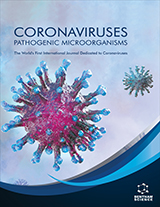Abstract
Aminoglycosides are aminoglycosidic aminocyclitols that contain amino sugars linked to an aminocyclitol ring by glycosidic bonds. Although relatively toxic compared with other classes of antibiotics, they remain primarily useful drugs in the treatment of infections caused by gram-negative bacteria. Since the advent of streptomycin by Waksman and co-workers, a series of milestone compounds like kanamycin, gentamicin, and tobramycin were introduced for the treatment of gram-negative bacillary infections. In 1970s, the semisynthetic aminoglycosides dibekacin, amikacin, and netilmicin demonstrated the possibility of obtaining compounds active against resistant strains that had developed resistance mechanisms towards earlier aminoglycosides. However, since then, the pace of development of new aminoglycosides has markedly slowed down. This review not only provides the comprehensive accounts of the developments in aminoglycoside antibiotics, but also provides insight about the mechanism of action and resistance, current efforts to develop aminoglycoside mimetics that target RNA, and potential strategies to overcome inactivation of aminoglycosides by aminoglycoside- modifying enzymes. Some of the interesting clinical implications like natural aminoglycoside resistances typical of common pathogens, prediction of responsible aminoglycoside-modifying enzyme from antibiogram data, and the use of liposomal-encapsulated aminoglycosides to increase the therapeutic index have also been discussed.
Keywords: Aminoglycosides, aminoglycosidic aminocyclitols, aminoglycoside-modifying enzymes, mechanism, mimetics, resistance, semisynthetic aminoglycosides
 5
5





















